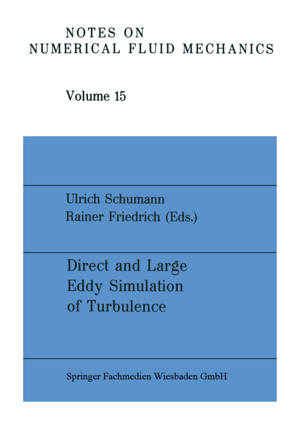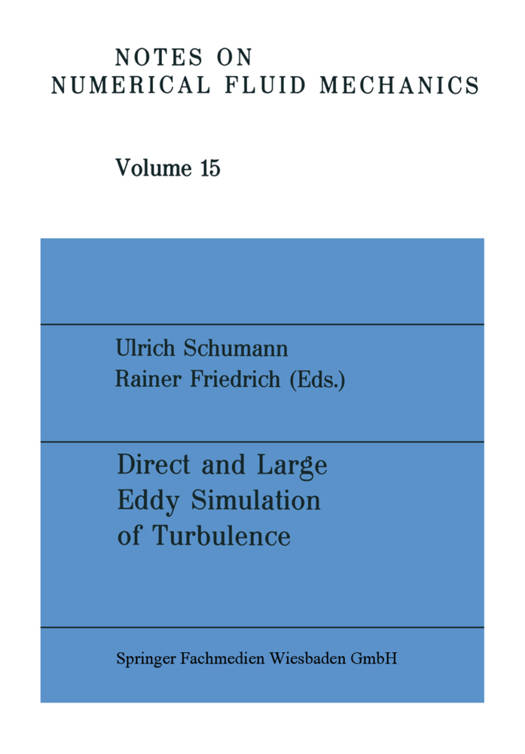
Bedankt voor het vertrouwen het afgelopen jaar! Om jou te bedanken bieden we GRATIS verzending (in België) aan op alles gedurende de hele maand januari.
- Afhalen na 1 uur in een winkel met voorraad
- In januari gratis thuislevering in België
- Ruim aanbod met 7 miljoen producten
Bedankt voor het vertrouwen het afgelopen jaar! Om jou te bedanken bieden we GRATIS verzending (in België) aan op alles gedurende de hele maand januari.
- Afhalen na 1 uur in een winkel met voorraad
- In januari gratis thuislevering in België
- Ruim aanbod met 7 miljoen producten
Zoeken
Direct and Large Eddy Simulation of Turbulence
Proceedings of the Euromech Colloquium No. 199, München, Frg, September 30 to October 2, 1985
Na Schumann
€ 105,45
+ 210 punten
Omschrijving
This volume contains papers presented to a EUROMECH-Colloquium held in Munich, September 30 to October 2, 1985. The Colloquium is number 199 in a series of colloquia inaugurated by the European Mechanics Committee. The meeting was jointly organized by the 'Lehrstuhl fur Stromungsmechanik' at the 'Technische Universitat Munchen' and the 'Institut fur Physik der Atmosphare' of the 'Deutsche Forschungs- und Versuchsanstalt fur Luft- und Raumfahrt' (DFVLR) in Oberpfaffenhofen. 'Direct' and 'large eddy simulation' are terms which denote two closely con- nected methods of turbulence research. In a 'direct simulation' (DS), turbu- lent motion is simulated by numerically integrating the Navier-Stokes equations in three-dimensional space and as a function of time. Besides ini- tial and boundary conditions no physical simplifications are involved. Com- puter resources limit the resolution in time and space, though simulations with an order of one million discrete points in space are feasible. The simu- lated flow fields can be considered as true realizations of turbulent flow fields and analysed to answer questions on the basic behaviour of turbulence. Direct simulations are valid as long as all the excited scales remain within the band of resolved scales. This means that viscosity must be strong enough to damp out the not resolved scales or the simulation is restricted to a lim- ited integration-time interval only. In summary, DS provides a tool to investigate turbulent motions from first principles at least for a finite band of scales.
Specificaties
Betrokkenen
- Auteur(s):
- Uitgeverij:
Inhoud
- Aantal bladzijden:
- 340
- Taal:
- Engels
- Reeks:
- Reeksnummer:
- nr. 15
Eigenschappen
- Productcode (EAN):
- 9783663000488
- Verschijningsdatum:
- 1/01/1986
- Uitvoering:
- Paperback
- Formaat:
- Trade paperback (VS)
- Afmetingen:
- 170 mm x 244 mm
- Gewicht:
- 562 g

Alleen bij Standaard Boekhandel
+ 210 punten op je klantenkaart van Standaard Boekhandel
Beoordelingen
We publiceren alleen reviews die voldoen aan de voorwaarden voor reviews. Bekijk onze voorwaarden voor reviews.









